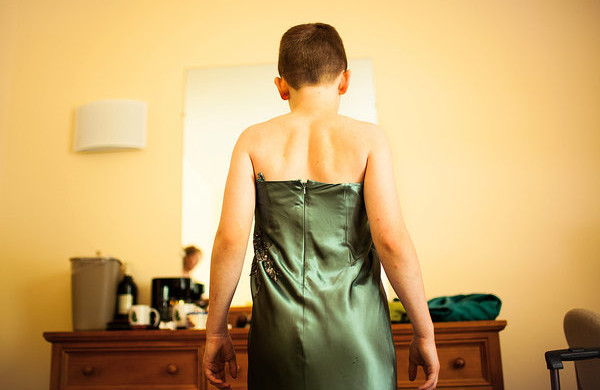
13
2012What’s So Bad About a Boy Who Wants to Wear a Dress?
This weekend’s New York Times Magazine cover story had the same name as this post. I recommend it to you. Click here for the article. (their photo too.)
When you read it, note the hundreds and hundreds of comments it generated in its first days. That should give you an idea of how sensitive this issue is.
It is astounding to see how the world has changed, and also to see a pattern of commentary that shows some folks stuck in the past and others racing ahead of where we are.
Any sea change in social structure tends to follow the same course. Think of the resistance to women wearing pants, or becoming capable leaders, or showing their elbows in public, or getting the vote.
The most amusing thing about all this is that people look at what their life was like, what their parents did, and perhaps what their grandparents did and think they know all of history – enough for sure to judge what’s normal and socially acceptable.
The truth is that boys wore frilly tops and skirts, the same as girls, for many years and in many cultures in previous centuries.
Strict rules dividing the sexes were put in place probably for religious reasons relating to the fear of homosexuality. Since then, they have slowly been peeled away – re”pealed” if you wish.
Simple thinking places everyone in easy-to-understand little boxes. But, there will always be those who don’t fit, and are doomed to bridle at the confines of their restrictions, or blow them up and, in so doing, become either a hero or a disgrace.
Well-meaning parents wanting the best for their children, tend to direct their kids to the tried and true – the ways that have the best odds of succeeding.
But, that’s not the kind of thinking that produces exceptional people, and I dare say that our greatest thinkers, musicians, performers, leaders have all bucked that trend and instead gone after what is improbable.
They dared to dream and to color outside the lines. We should too.



MIkki
Sadly, most people want everybody — everything, really — put in boxes. It’s just easier for them. That way they don’t have to give these things any thought. My father was one of these people. He wouldn’t even let us help with chores or cooking because doing these things would, “make us queers”.
But then there are people who actually respond to what their male children are saying to them. And they give thoughtful consideration to them when they feel the need to express a feminine side of themselves.The article does a good job of showing how these boys grow up to be whomever they were going to be anyway. But the children of these thoughtful parents do it in a true comfort zone.
It’s a very good article. It points out options for parents with “boy-girl” sons and, I think, helps those parents feel less like “lone rangers”, something those of us felt back in the 1950’s and ’60’s.
I think they might have done a little better job of describing the reasons boys used to be dressed in girl’s clothing as young children. My reading on this subject has told me one of the reasons for this practice was to deter kidnappers. Sadly, girls have always been less valued than boys, and the assumption was that people would not kidnap girls.
My dad looked mighty pretty in his little dresses, much as I might have, had I been born in an earlier era. Would I have outgrown my desire to wear women’s clothing, had the opportunity to dress as I would have wished when I was younger? I don’t know, but I’d like to think the answer would be, “No”. I’m thinking I would present much more feminine, had there been no stigma on wearing girls’ clothing when I was younger. I would have had more practice, that’s for sure.
gswi
Thanks for the link to that great article, it’s a very good and interesting read.